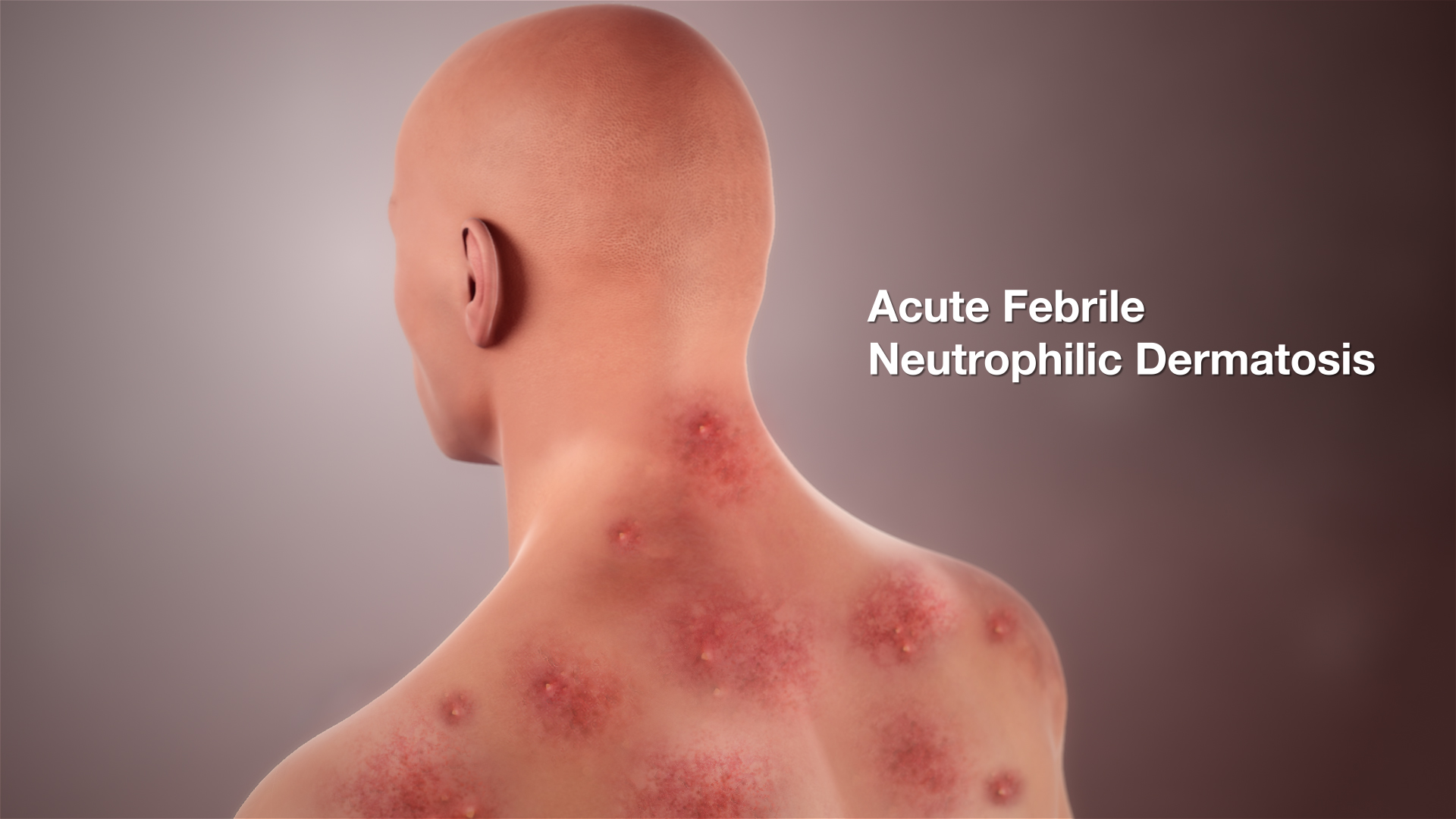Acute febrile neutrophilic dermatosis is an uncommon skin condition that generally appears on a person’s arm, neck, head, and trunk. It is also known by the name of sweet’s syndrome and is known to recur irregularly. These rashes spread rapidly and cause pain to the patient. People of all ages and gender can get it. It is not contagious, so it is nearly impossible to either catch or give it.

Symptoms
The major symptoms of acute febrile neutrophilic dermatosis include the development of rash, bumps or lesions, which are red/ purple in color and painful. These emerge on the arms, back, neck or even face. These rashes become bigger rapidly and grow in clusters and often join together to form big patches. Some of these may eventually break and get infected.
These rashes usually occur after fever or an upper respiratory infection and can affect bones, central nervous system, kidneys, intestines, lungs, spleen, muscles, heart, mouth, eyes, and ears.
Other common symptoms may include:
- The feeling of having flu
- Feeling exhausted
- Mouth sores
- Pink eyes
- Joint pain
- Headaches
Causes
Some of the medical resources claim that it is an autoinflammatory disease and is caused due to the body’s immune system. Sometimes, the condition is a result of any of the below-mentioned problems:
- Blood cancers like leukemia or lymphoma
- Ulcerative colitis or Crohn’s disease
- Colon, solid tumor or breast cancer
- Pregnancy
- Strep throat or chest infection
- Insect bites or needle pricks
- Rheumatoid arthritis
Reactions from drugs like nonsteroidal anti-inflammatory drugs and medications that boost the production of white blood cells are also found to be responsible. However, a medication used for fighting cancer known as granulocyte is found to be the most common reason behind the emergence of it.
Treatment
Since it is considered an auto-inflammatory disease, in the majority of the cases, the condition gets better by itself. Physicians around the world have been seen to prescribe corticosteroid pills like prednisone for the treatment of acute febrile neutrophilic dermatosis. It is observed that corticosteroids are available in the market as injections and topical creams.
People who have wounds on their skin need proper care as well as treatment for prevention from infection. People having underlying problems can get rid of acute febrile neutrophilic dermatosis through the treatment of underlying disease.
Those people whose condition isn’t improving through the help of steroids are seen to be prescribed immunosuppressant drugs like cyclosporine, dapsone, or indomethacin. Doctors have been observed to prescribe anakinra treat for suppression of inflammation, which is generally utilized for the treatment of rheumatoid arthritis.
While symptoms of the condition are likely to fade away in about six weeks, chances are there that the condition may recur. Hence the best possible solution is to consult a doctor for getting the condition better.
People suffering from acute febrile neutrophilic dermatosis are usually advised by the doctors to apply sunscreen on their skin, while they go out. For enhanced protection, they are also advised to wear protective clothing like wide-brimmed hats, long-sleeved shirts, and sunglasses. While treating this condition on its own is not advised, it is best advised to consult a doctor for the suggestion of a skincare regimen or medication schedule. These affected people are also advised to spend time in shady areas when there is an absolute need to go out, use a sunscreen with SPF 15+ along with UVA and UVB protection, and to avoid outdoor activities in the midday and early afternoon.
Disclaimer: The information in no way constitutes, or should be construed as medical advice. Nor is the above article an endorsement of any research findings discussed in the article an endorsement for any of the source publications.








